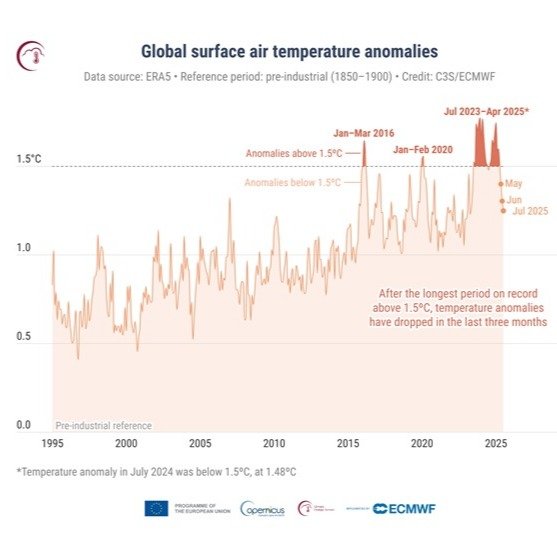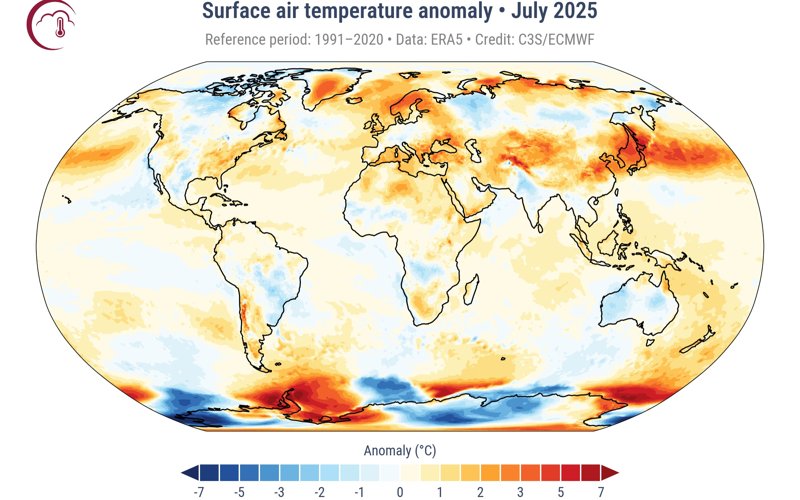July 2025 confirmed as third-warmest on record, Copernicus reports
July 2025 was the third-warmest July globally, with the average surface air temperature reaching 16.68°C, Kazinform News Agency correspondent reports, citing the Copernicus Climate Change Service.

This temperature was 0.45°C above the 1991–2020 average and 1.25°C above the 1850–1900 pre-industrial baseline. Although slightly cooler than July 2023 (by 0.27°C) and July 2024 (by 0.23°C), this past month marked another significant milestone in the ongoing global warming trend. Over European land, the average temperature in July reached 21.12°C, which is 1.30°C above the climatological norm, making it the fourth-warmest July in Europe on record.

Notable heatwaves were observed in Fennoscandia, particularly affecting Sweden and Finland. Southeastern Europe also faced extreme temperatures and wildfire outbreaks, with Türkiye registering a national temperature record of 50.5°C. Meanwhile, below-average temperatures were reported in parts of Central Europe, western Russia, and isolated areas of Spain.
Globally, the most pronounced above-average land temperatures occurred across the Himalayas, China, and Japan. In contrast, cooler-than-average conditions were recorded in parts of Antarctica, as well as across North and South America, India, much of Australia, and parts of Africa.
The average global sea surface temperature between 60°S and 60°N was 20.77°C, ranking as the third highest for July since records began. The Norwegian Sea, parts of the North Sea, and areas of the North Atlantic west of France and the United Kingdom experienced record-high sea surface temperatures, along with parts of the western North Atlantic and western North Pacific.

Arctic sea ice extent in July was 10% below average, ranking as the joint second-lowest July value in 47 years of satellite monitoring, nearly identical to 2012 and 2021. The lowest sea ice concentrations were found in the Kara Sea and around Svalbard and Franz Josef Land. In the Southern Hemisphere, Antarctic sea ice extent was 8% below average, the third-lowest July level on record.
Hydrological patterns across Europe showed above-average precipitation in central regions, including northern France, the eastern United Kingdom, southern Scandinavia, northeastern Europe, northern Italy, and parts of western Russia. In contrast, July was drier than average in Fennoscandia, Greece, the Balkans, the Black Sea coast, and southern France, with wildfire activity reported in several of these areas.
Globally, below-average rainfall was recorded across large parts of the USA and Canada, eastern Africa, the Arabian Peninsula, central Asia, Japan, Australia, southern Africa, and much of South America. Meanwhile, wetter-than-normal conditions led to flooding in parts of the eastern and southern United States, northern Mexico, northern India, regions of China, and eastern Russia.
Earlier, Kazinfrom shared a study that showed how extreme weather is linked to climate change and increases in food prices around the world.
